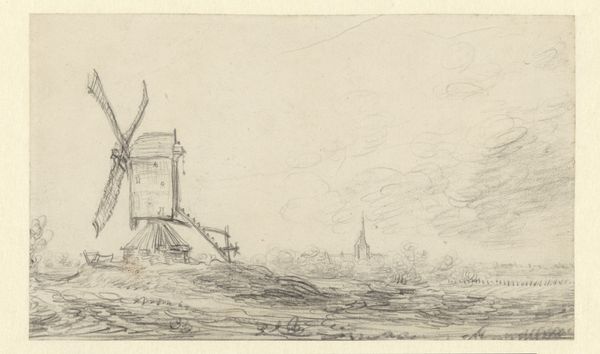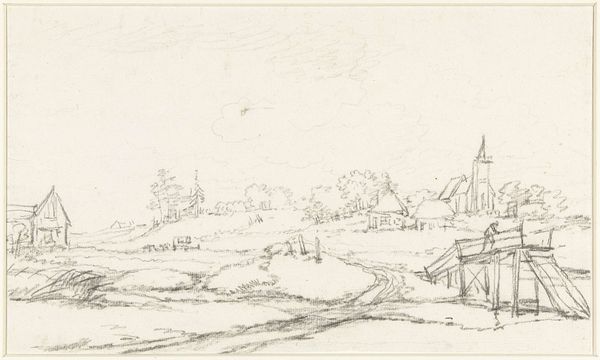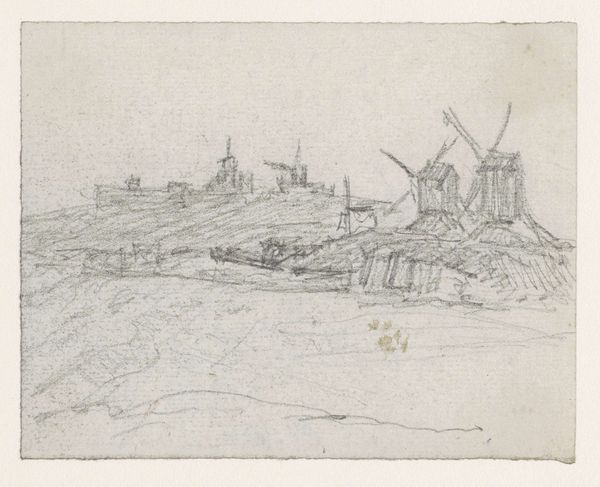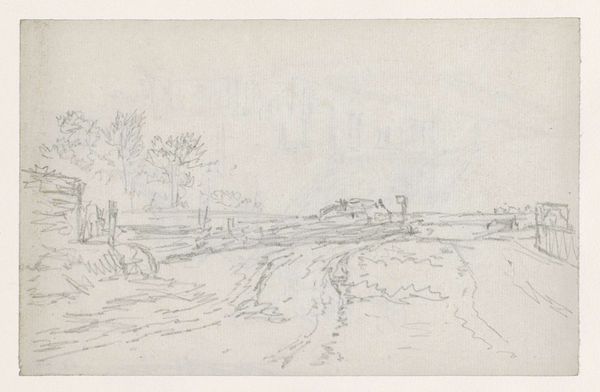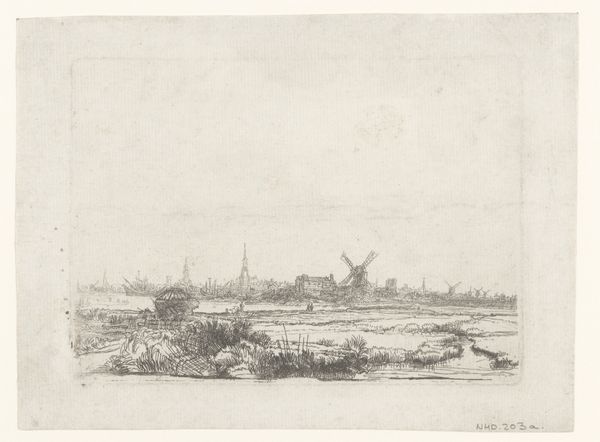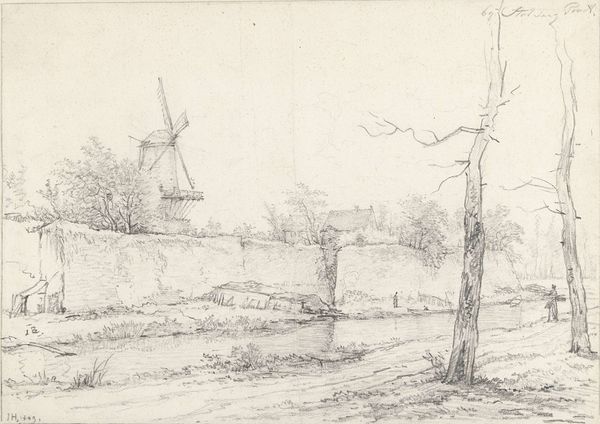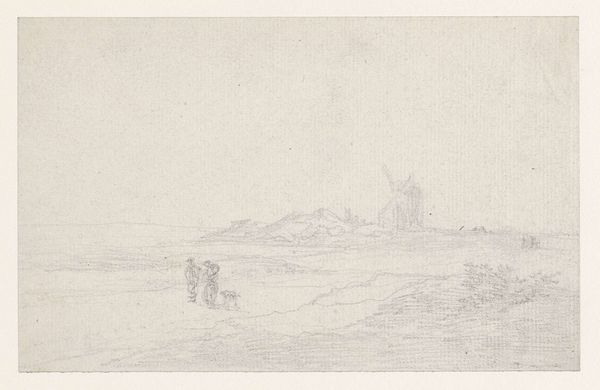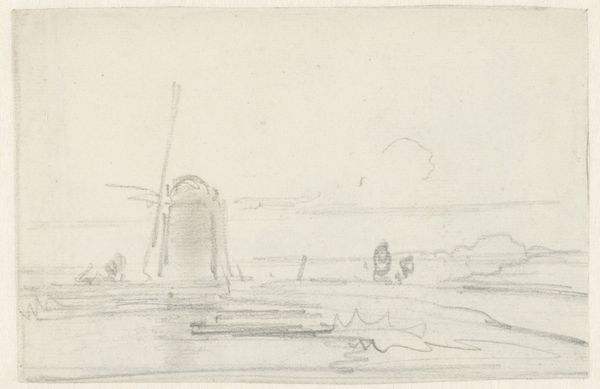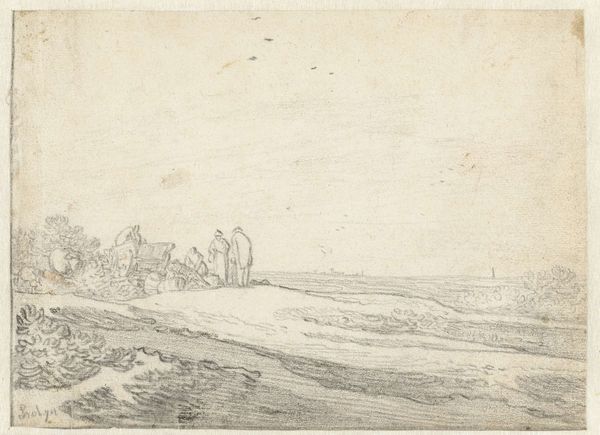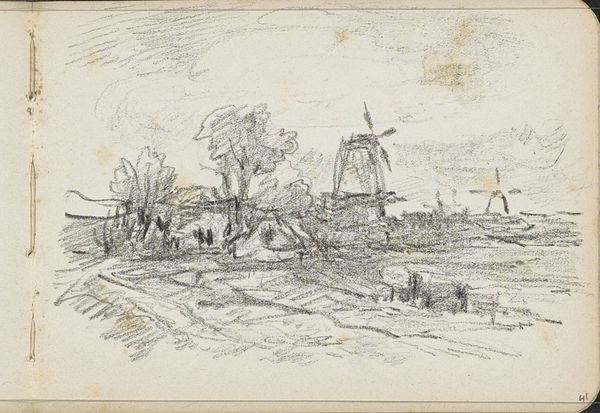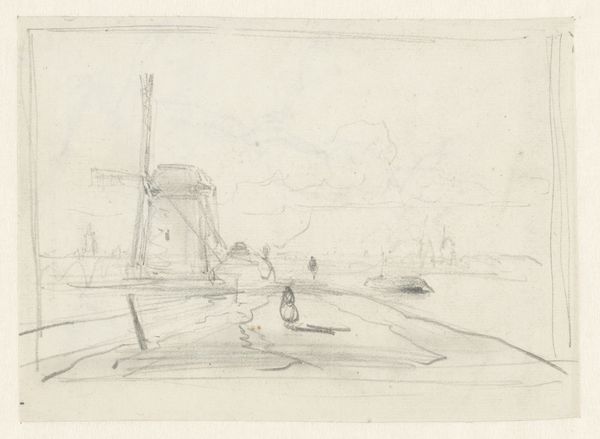
drawing, pencil
#
drawing
#
pencil sketch
#
landscape
#
romanticism
#
pencil
#
line
#
realism
Dimensions: height 100 mm, width 155 mm
Copyright: Rijks Museum: Open Domain
Editor: This pencil sketch, "Landschap met twee molens," or "Landscape with Two Windmills," attributed to Georges Michel, and created sometime between 1773 and 1843, is quite simple in its execution. I’m struck by how the roughness of the line work almost makes the scene feel…bleak, in a way. What do you see when you look at it? Curator: The apparent "simplicity" is deceptive. Focus on the pencil strokes. They are evidence of labor. This isn't just a pretty landscape; it's a record of Michel's *work* to represent the landscape. Consider what the windmills themselves signify: industry, production, the human transformation of the natural world. Editor: I see your point, especially since wind power was pretty much state-of-the-art for power back then. What about the figures in the front, are they important? Curator: Precisely. Are they dwarfed by the industrial landscape, or are they masters of it? Notice how the sketch blurs the boundary between ‘high art’ and practical rendering – this could just as easily be a preliminary study for something larger, or even a technical drawing. Think about the consumption of landscapes, then and now. Editor: I never thought about landscape art that way. It does make me wonder about what these fields would be growing, and who the sketch was made for... Curator: Exactly! What materials were needed? Who provided them? Where did the artist sell his work? By interrogating those aspects, we uncover layers of meaning that escape a purely aesthetic analysis. Consider the economics embedded within the pencil lines themselves. Editor: So, by examining the materials and production, we're essentially revealing the economic and social underpinnings of the art. I see how a seemingly simple drawing can become quite complex. Thanks! Curator: My pleasure. Thinking about art in this way allows us to look beyond the surface and see art not just as aesthetic objects but as products of human labor and social conditions.
Comments
No comments
Be the first to comment and join the conversation on the ultimate creative platform.
